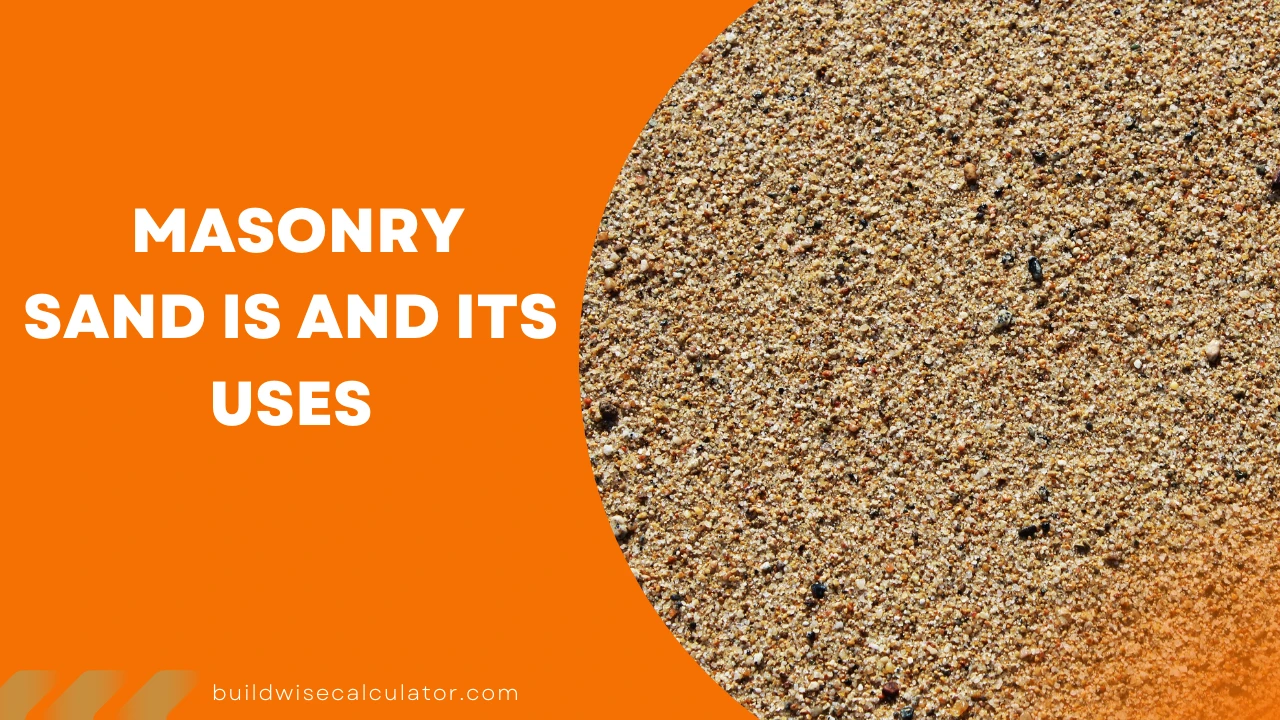What Masonry Sand Is and Its Uses
Publish on: 16-Mar-2025

If you’ve ever worked on a construction project or even built a sandcastle, you’ve probably heard of masonry sand. But what exactly is it, and why is it so important? In this blog, we’ll break down what masonry sand is, its key features, and the many ways it’s used in construction and beyond.
What is Masonry Sand?
Masonry sand is a fine-grained sand specifically designed for construction and masonry work. It’s made by crushing and screening natural stone or gravel. Unlike regular sand, masonry sand is free of large rocks, clay, and debris, making it ideal for precision work.
Key Features of Masonry Sand:
- Fine Texture: Its smooth, even grains make it easy to work with.
- Clean and Washed: Free of impurities like clay or silt.
- Versatile: Can be used in a variety of construction applications.
Common Uses of Masonry Sand
Masonry sand is a go-to material for many projects because of its versatility and reliability. Here are some of its most common uses:
1. Mortar Mixes
Masonry sand is a key ingredient in mortar, which is used to bond bricks, stones, or concrete blocks together. When mixed with cement and water, it creates a strong, durable paste that holds structures in place.
2. Concrete Work
It’s often added to concrete mixes to improve workability and strength. The fine grains fill gaps between larger aggregates, creating a smoother finish.
3. Paver Installation
Masonry sand is used as a base or leveling layer under pavers, bricks, or stones. It's fine texture allows for precise leveling, ensuring a stable and even surface.
4. Plastering and Stucco
For plastering walls or applying stucco, masonry sand is mixed with cement and lime to create a smooth, workable paste. It’s perfect for achieving a polished finish.
5. Landscaping
Masonry sand is also popular in landscaping projects. It’s used to level ground, fill gaps between pavers, or even create sandboxes for kids (though it’s not always the safest choice for play areas).
Why Choose Masonry Sand?
Masonry sand stands out because of its consistency and quality. Here’s why it’s preferred over other types of sand:
- Smooth Finish: Fine grains create a polished look in plaster, mortar, or concrete.
- Easy to Work With: The uniform texture makes it easy to mix and apply.
- Durable: It provides long-lasting strength in construction projects.
How Much Masonry Sand Do You Need?
The amount of masonry sand you’ll need depends on your project. For example:
- Mortar Mixes: Typically, a 1:3 ratio of cement to sand is used.
- Paver Base: About 1 inch of sand is needed under pavers.
- Concrete Work: Sand makes up about 30-40% of the total mix.
To calculate the exact amount, measure the area and depth of your project. A cubic yard of masonry sand covers about 100 square feet at a 1-inch depth.
🏗️ Planning a construction or landscaping project? Use our Masonry Sand Calculator to quickly find out how much sand you need. Just enter your project dimensions, and it will return the Masonry Sand Required—making your material planning simple and accurate!
Where to Buy Masonry Sand
You can find masonry sand at most home improvement stores, landscaping suppliers, or construction material retailers. It’s sold by the bag, cubic yard, or ton, depending on your needs. Prices typically range from 25 to 50 per ton, but this can vary based on location and quantity.
Final Thoughts
Masonry sand is a versatile and base material for many construction and landscaping projects. It's fine texture, clean composition, and durability make it a reliable choice for everything from mortar mixes to paver installations.
Whether you’re a DIY enthusiast or a professional contractor, understanding what masonry sand is and how to use it can help you achieve better results in your projects
Recent Posts
How Much Rebar Do I Need? – A Complete Guide
How Much Epoxy Do You Need for Your Floor?
How to Calculate Yards of Concrete: A Simple Guide for Your Next Project
Difference Between Cement and Concrete: What You Need to Know
How to Calculate Tile for a Shower: A Beginner’s Step-by-Step Guide
Roof Truss: Picking the Right Thickness for Your Project
Concrete Slab Construction: Materials, Process & Thickness Rules
How to Calculate Square Feet of a Wall: A Beginner’s Step-by-Step Guide
What is Crown Molding? Its Pros, Cons, and Uses
What is MDF? A Complete Guide to Medium-Density Fiberboard
What is Concrete? History, Types, Costs, and Tips for Working with It
What is Asphalt, How is it Made, and How Much Does it Cost?
Drywall: A Complete Guide to Installation, Repair, and Finishing
Floor Wax Guide: Best Practices for Wood, Tile, and Hardwood Surfaces
Tar and Gravel Roofs: A Durable Roofing Solution for Modern Homes
Building and Installing Post and Rail Fences
Best Plywood Types for Roofing: Strength, Durability, and Protection
Slope: Why It Matters and How to Define It
Roof Panels: Types, Installation, Costs, and Maintenance
Electric Fences: Installation, Costs, Testing, and How They Work
How to Calculate Acreage of an Irregular Lot?
How Deep Should a Patio Base Be? Expert Tips and Material Choices
Deck Posts: Types, Materials, Pros & Cons, and Spacing
Types of Stone Wall: A Complete Guide
Mild Steel vs Carbon Steel | What is the differance?
How Deep Should a Fence Post Be?
5052 vs. 6061 Aluminum: Key Differences and Best Uses
Carpet Area vs Built-Up Area: What’s the Difference and How to Calculate?